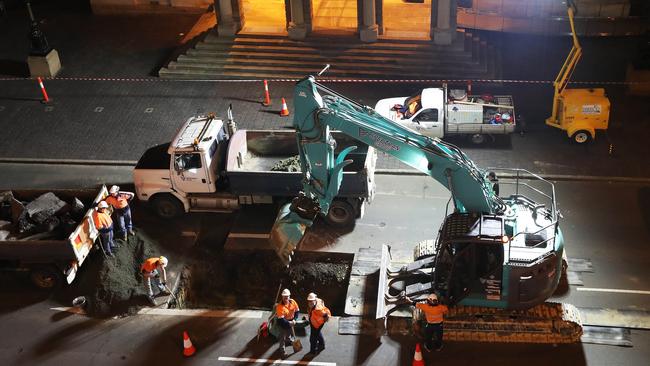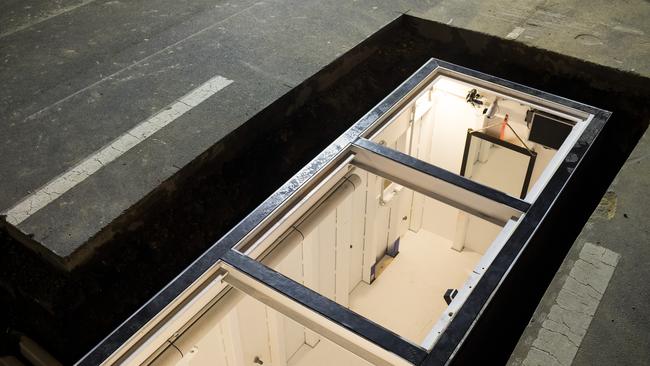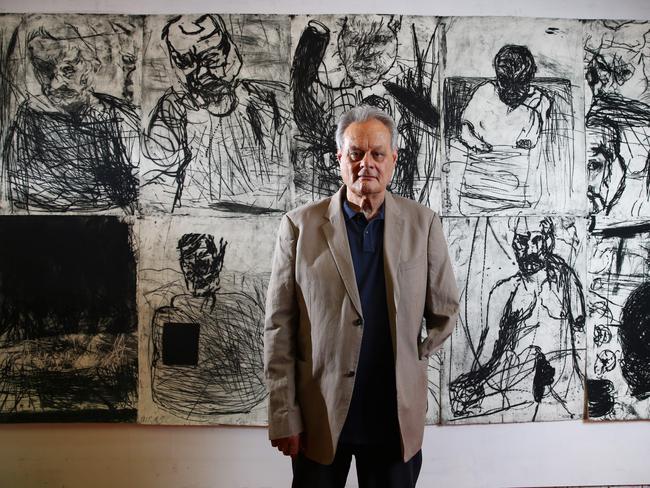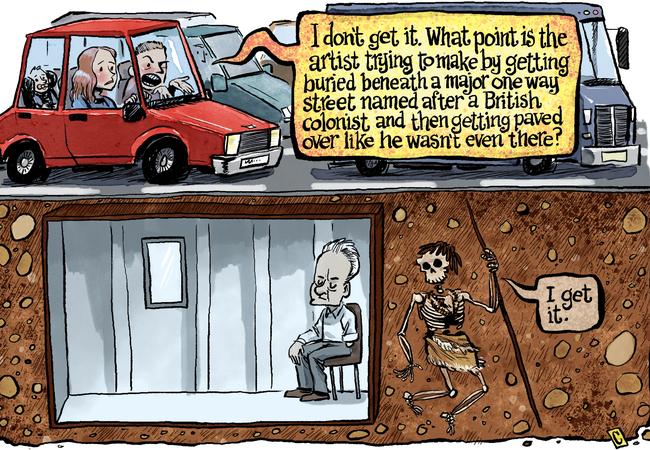Dark Mofo: Aboriginal community backs Mike Parr burial act
TASMANIA’S Aboriginal community says it supports the message performance artist Mike Parr is trying to send with his Dark Mofo project — but not everyone is convinced he’s the right person to send it.
Events
Don't miss out on the headlines from Events. Followed categories will be added to My News.
TASMANIA’S Aboriginal community says it supports the message performance artist Mike Parr is trying to send with his upcoming Dark Mofo project — but not everyone is convinced he’s the right person to send it.
MORE: STRONG REACTION AS DARK MOFO GETS DEEP
Parr will spend three days next month buried inside a 4.5m x 1.7m x 2.2m container just under the surface of one of Hobart’s busiest thoroughfares, Macquarie St, as traffic continues as normal above him.

Underneath The Bitumen The Artist is Parr’s response to two events that have helped shape Tasmania’s history: the transportation of 75,000 British and Irish convicts in the first half of the 19th century, and the subsequent violence against the state’s Aboriginal population.
Yesterday Tasmanian Aboriginal Centre chief executive Heather Sculthorpe told the ABC that Mr Parr’s project was “insulting” to members of the Aboriginal community, and that if Dark Mofo “have any interest in telling the Aboriginal story … some old fella under a road is not the way to do it”.

But then this morning, TAC spokesman Michael Mansell released a statement claiming that “the Aboriginal people of Tasmania are right behind” Parr “for making the point that Tasmania’s historical treatment of Aboriginal people (has) been hidden — buried, as it were — for far too long”.
“Mr Parr’s unusual method of making the point might raise eyebrows, but more importantly he might raise Tasmania’s awareness of the mass killings of Aboriginals,” Mr Mansell said, adding that massacres at Risdon Cove in 1803 “were just the start” of a long and sustained campaign of violence against the state’s Aboriginal men, women and children.
“This is the real history of white settlement,” he said.
“Instead of Tasmania putting its head in the sand it needs to openly talk about the past and how it affects people today. Mr Parr is making his contribution.”

Ms Sculthorpe today agreed with much of what Mr Mansell wrote, but questioned whether Mr Parr was in a position to be commenting on Aboriginal stories.
“We agree on the bottom line, which is that it’s vital that Tasmanians and people in Hobart know more about the Aboriginal history of this place,” she said.
“The points (Mr Mansell) made in his letter are spot on — those (historical events) are the sorts of things that people need to know about. Whether some old bloke putting himself under a road is the best way to do it, is where we disagree.
“I think — and according to Facebook, a lot of people agree with me — that Aboriginal people can tell their stories better than somebody under a road … and I think Michael proved that through his letter.”

Hobart Lord Mayor Ron Christie also questioned whether Tasmania’s indigenous community was consulted about the idea.
“Now, I am not questioning the artist’s work or integrity as a silent commentary on 19th century colonial violence against indigenous people and convicts. God forbid, not during Reconciliation Week, but I do wonder if our indigenous community was consulted about the idea,” he said.
Creative director Leigh Carmichael said Dark Mofo “understands and respects” Ms Sculthorpe’s concerns, but “it’s important that discussions around our shared history continue to take place, no matter how difficult or uncomfortable”.


